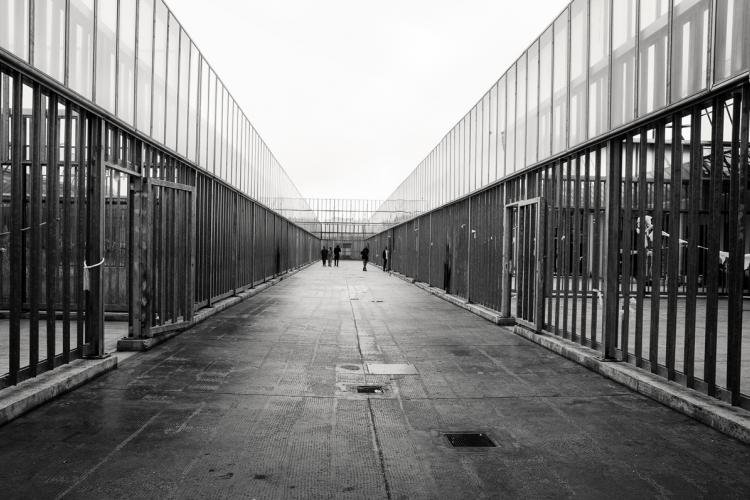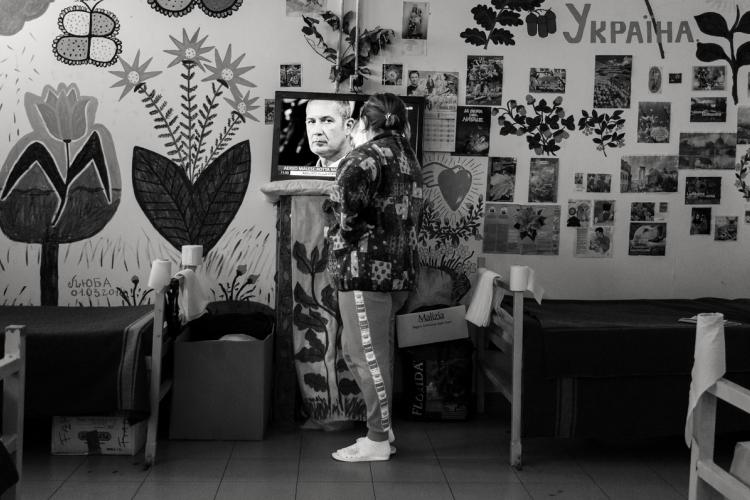Photographing Italy’s Identification and Expulsion Centers (CIEs)
Posted
Time to read
Guest post by Mario Badagliacca, a photographer based in Rome, Italy. Mario is currently working on long term projects on migrants’ and migrant communities’ daily practices and adjustments within the migration process. He was recently awarded a 2014 Audience Engagement Grant by the Documentary Photography Project of Open Society Foundations to partner with the Archive of Migrant Memories (AMM) ‘on their campaign to collect, archive, and share testimonies of migrants held in Identification and Deportation Centers throughout Italy.’
Although foreign nationals in Italy are detained within the Identification and Expulsion Centers (CIEs) under the status of ‘guests,’ their stay in these contentious structures corresponds to a ‘de facto’ detention, as they are deprived of their freedom and subjected to a regime of abuse and coercion. These Centers aren’t prisons but very often resemble them, with distinctive features such as high levels of security, barbed wire fences, barking dogs, and militarized personnel. These features make CIEs largely off limits to Italian civil society and journalists, as well as families of the detainees, who are left alone and in distress. Some progress has been made recently, but journalists and activists still face major obstacles in promoting human rights and raising public awareness of these places.


During this last year, AMM, in partnership with the campaign ‘Close down CIEs,’ has started collecting testimonies and life stories of migrants held in Italy’s CIEs. The main goal of this work is to denounce the violations of human right inside the CIEs while also documenting a collective memory about migrations in Italy, both for migrants and Italian society.

I started this work almost four years ago, in the expulsion Center of Rome―Ponte Galeria―and the center of Bari―Bari Palese. It was very difficult to work on this project since journalists and activists were denied access to the Centers until three years ago. When I was finally granted access, I was kept under strict and constant supervision. The first times I visited, staff were highly directive. They escorted me around like I was on a kind of ‘safari,’ pushing me to speak with detainees who were ‘more controllable’ and close to staff. In the last year, however, the Center staff have become more keen to have journalists visit the centers, softening their approach to supervision.

During my first time in a CIE―in Ponte Galeria in the center of Rome―I felt as if I’d just stepped into a non-country, a painful limbo where human rights were suspended and violence ruled. I felt disoriented. The people appeared lost in confusion, pain, and fear. From a visual point of view―as well as psychologically―it was very hard for me to explain where I was. This is because when I arrived at Ponte Galeria, I was thinking I’d find something similar to a regular prison. Whereas the CIE in Bari looks like a prison, with large corridors and big iron doors with small windows through which you can communicate with the prisoners, Ponte Galeria in Rome is different. The male and female units are organized in two separate outdoor spaces. After a system of gates, you arrive in one of these two units, each organized into several blocks, where the migrants sleep, which are surrounded by iron cages. The main space, alonside the blocks is a used by the police as a ‘safety zone’ in order to control the detainees, especially during the riots. At night, all parts of the centre are locked down until the morning. When I arrived at Ponte Galeria, women and men were walking or sitting around these spaces, like shadows.



Despite some successes, journalists and activists still face major obstacles in accessing CIEs. At present, I continue to implement my photographic project of Italy’s CIEs, along with a new multimedia project involving some of the migrants who’ve been held in the centers. I also continue to work in partnership with the AMM to collect the stories of detainees, as well as to organize events in Italy and abroad in order to sensitize people to the issue of migrant detention through the involvement of opinion leaders, journalists, lawyers, and activists. This is because CIEs are a political problem. In Italy, the right-center political party is using migration issues as part of a xenophobic and populist agenda to implement stricter immigration laws. The left-center hasn’t yet proposed alternative ideas on how to manage migrations in Italy, but is trying to reduce the length of detention (from 18 months to 3 months). As of yet, they’re not proposing to close the CIEs down.
See more of Mario’s work, including ‘The Gate of Shadows’ project, by visiting his website.
Any comments about this post? Get in touch with us! Send us an email, or post a comment here or on Facebook. You can also tweet us.
__________
How to cite this blog post (Harvard style):
Badagliacca, M. (2014) Photographing Italy’s Identification and Expulsion Centers (CIEs). Available at: https://www.law.ox.ac.uk/research-subject-groups/centre-criminology/centreborder-criminologies/blog/2014/11/photographing/ (Accessed [date]).
Share
YOU MAY ALSO BE INTERESTED IN
With the support of









